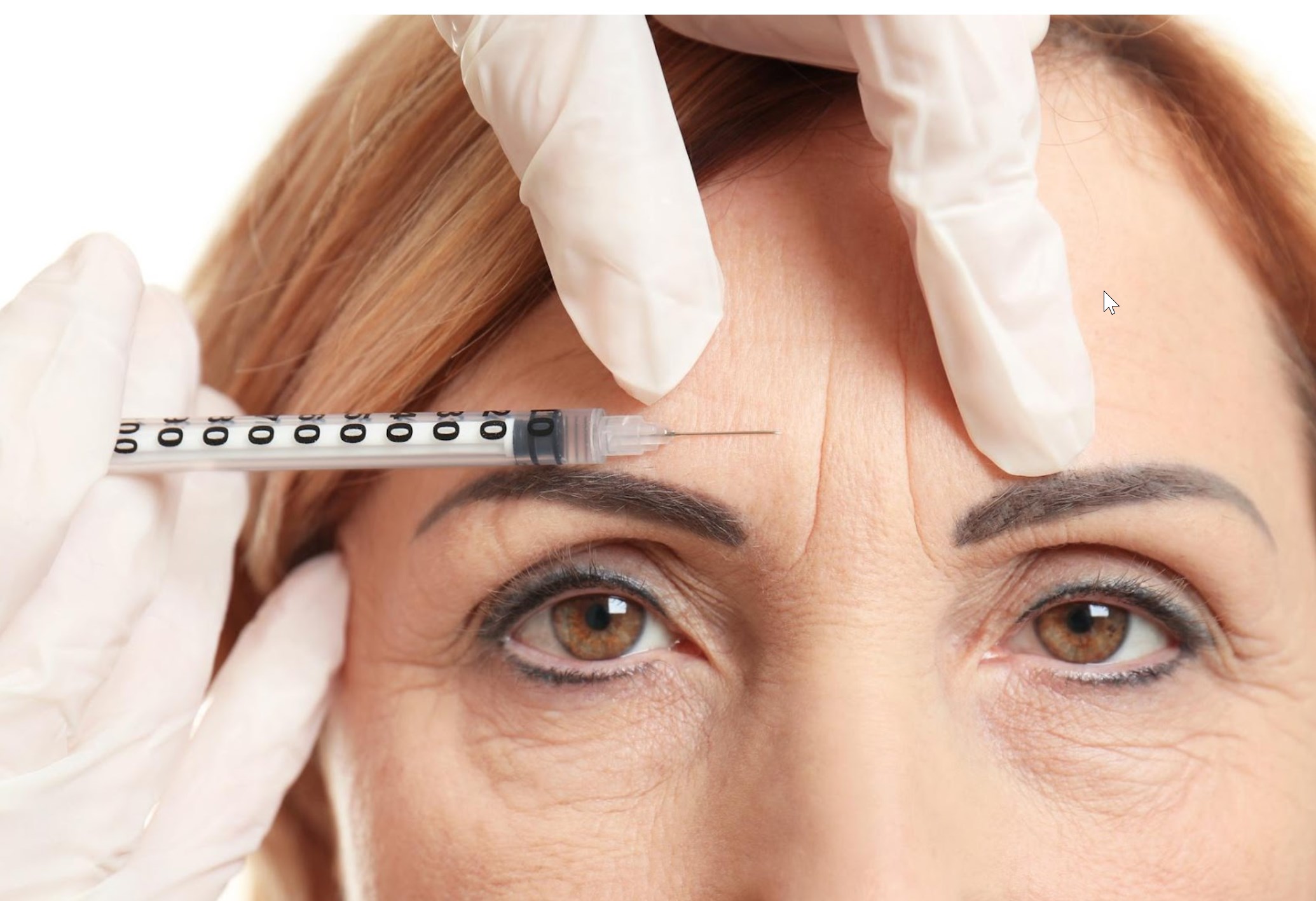blog
Mastering Botulinum Toxin Injections – How to Avoid Ptosis and Ensure Optimal Results

Apr 16 2025
Reading Time: 7 Minutes
Author:
Imagine this – a patient eagerly books their appointment for botulinum toxin injections, excited to achieve a refreshed, youthful, and rejuvenated appearance. They have done their research, chosen an experienced injector, and are looking forward to seeing smoother skin and a well-rested look. The treatment itself goes smoothly, and everything seems perfect. However, within just a few days, they return with a concern that is hard to ignore – their eyelid or brow has unexpectedly and noticeably drooped.
This complication, known as ptosis, is one of the most undesirable outcomes in medical aesthetics. It can be distressing for the patient, who may feel self-conscious or frustrated, and equally concerning for the injector, who strives for precision and patient satisfaction. While ptosis is not an everyday occurrence, when it does happen, it can impact a patient’s confidence in both the treatment and their provider.
All images used under license from Canva. © APT Medical Aesthetics, 2025. All rights reserved.
The good news is that with the right injection techniques, careful dosing, and an in-depth understanding of facial anatomy, this complication is largely preventable. Whether you are just beginning your journey as an aesthetic injector or you are an experienced practitioner looking to refine your technique, understanding how to minimize the risk of ptosis is essential. In this guide, we will walk you through the causes of ptosis, how to prevent it, and what to do if it occurs, so you can master the art of botulinum toxin injections with confidence and precision.
What Is Ptosis and Why Does It Occur?
Ptosis is a term used to describe the unwanted drooping of the eyelid or eyebrow following botulinum toxin injections. This occurs when the neurotoxin unintentionally spreads to nearby muscles, causing unintended muscle relaxation that alters facial expressions in an undesirable way. While botulinum toxin treatments are highly effective for softening wrinkles and achieving a youthful appearance, precision is key. When the toxin migrates or is injected into the wrong area, the result can be a weakened muscle that plays a crucial role in eyelid or brow elevation.
There are two primary types of ptosis that injectors should be aware of:
- Eyelid Ptosis – This occurs when botulinum toxin affects the levator palpebrae superioris, the muscle responsible for lifting the upper eyelid. If this muscle is inadvertently weakened, the eyelid can droop, leading to a tired or asymmetrical appearance.
- Brow Ptosis – This happens when excessive botulinum toxin is injected into the frontalis muscle, which is responsible for lifting the eyebrows. Weakening this muscle too much can cause the brows to drop, creating a heavy or hooded look, especially in patients who already have low-set brows.
All images used under license from Canva. © APT Medical Aesthetics, 2025. All rights reserved.
Although ptosis is not a common complication, it can be frustrating for both patients and injectors when it occurs. The best way to avoid this issue is by fully understanding facial anatomy, carefully selecting injection sites, and using the appropriate dose to achieve the desired aesthetic outcome without compromising muscle function. By taking these precautions, injectors can minimize the risk of ptosis and ensure a safe, effective, and satisfying treatment experience for their patients.
Common Reasons Why Ptosis Happens
Several factors contribute to ptosis following botulinum toxin injections. Being aware of these can help you avoid complications and achieve superior patient outcomes.
- Improper Injection Placement – Injecting too close to the orbital rim increases the risk of neurotoxin diffusing into the levator muscle, causing eyelid ptosis.
- Excessive Product Dilution – Highly diluted neurotoxin spreads further than intended, increasing the likelihood of affecting unintended muscles.
- Over-Treating the Frontalis Muscle – This is one of the most common causes of brow ptosis. When the frontalis muscle is over-relaxed, the brows lose their natural ability to lift.
- Post-Treatment Rubbing or Pressure – Patients who rub or massage the treated area too soon after injections may unintentionally spread the product.
- Anatomical Variations – Every patient’s facial anatomy is unique. Some individuals have naturally weak frontalis muscles, making them more prone to brow ptosis if too much product is injected.
All images used under license from Canva. © APT Medical Aesthetics, 2025. All rights reserved.
Top Tips to Prevent Ptosis When Performing Neurotoxin Injections
Avoiding ptosis starts with meticulous injection techniques and thorough patient education. Here are some of the best practices to ensure safe and effective treatments.
- Precise Injection Placement – Stay at least 1 cm above the orbital rim when treating the forehead to prevent diffusion into the levator palpebrae superioris.
- Use the Right Dosage – Avoid over-diluting your botulinum toxin and stick to recommended reconstitution guidelines.
- Assess the Patient’s Muscle Strength – Weak frontalis muscles require conservative dosing to prevent excessive relaxation and brow ptosis.
- Avoid Over-Treating the Forehead – Especially in older patients, where excessive relaxation of the frontalis can result in noticeable brow drooping.
- Educate Patients on Aftercare – Advise patients not to rub, massage, or lay down for at least 4 hours post-treatment to prevent product migration.
- Use a Conservative Approach for First-Time Patients – Start with lower doses and adjust accordingly at follow-up appointments to ensure natural-looking results.
- Understand Your Patient’s Facial Anatomy – Every face is different, and customizing injection placement based on their unique muscle activity will lead to better outcomes.
What to Do If Ptosis Occurs?
Even with the most precise injection techniques and careful preventative measures, ptosis can occasionally happen. As an injector, knowing how to address this complication is crucial for maintaining patient trust and confidence. If a patient experiences eyelid or brow ptosis after a botulinum toxin treatment, here are some strategies to help manage and improve the condition:
- Iopidine (Apraclonidine) Eye Drops – These prescription eye drops work by stimulating Muller’s muscle, which helps elevate the upper eyelid temporarily. While this does not completely reverse the effects of neurotoxin-induced ptosis, it can provide symptomatic relief for patients experiencing significant drooping. The effects last for a few hours per dose, so patients may need to apply the drops multiple times a day as directed.
All images used under license from Canva. © APT Medical Aesthetics, 2025. All rights reserved.
- Wait It Out – One of the most reassuring aspects of botulinum toxin treatments is that the effects are always temporary. Ptosis caused by unintended diffusion or excessive weakening of a muscle typically resolves within 3 to 6 weeks, depending on the patient’s metabolism, the dose used, and the area treated. While waiting for the neurotoxin to wear off can be frustrating for the patient, reinforcing the temporary nature of the complication can help manage expectations.
- Encourage Brow-Lifting Exercises – If a patient is experiencing brow ptosis, they may benefit from engaging the frontalis muscle through specific facial exercises. Encouraging them to practice raising their brows in a mirror multiple times a day may help counteract the drooping by keeping the muscle active. While results vary, some patients may find this technique helpful in minimizing the appearance of ptosis.
- Reassure and Educate – Patient communication is essential when addressing ptosis. Many patients may initially feel anxious or concerned about their appearance, so providing clear, professional guidance can ease their worries. Explain that botulinum toxin is not permanent, that the condition will improve over time, and that there are temporary solutions available to help them manage the symptoms. Educating them on why ptosis happened and how it can be avoided in the future can also reinforce their trust in you as a skilled injector.
By staying informed and prepared to handle complications like ptosis, you can confidently guide your patients through any concerns while maintaining a reputation for safe and effective aesthetic treatments.
Case Study – A Lesson in Precision and Patient Communication
One of our previous trainees, a skilled nurse injector, shared an insightful case. She treated a patient who wanted a subtle brow lift. Being cautious, she adjusted her injection technique, keeping her doses conservative and strategically placed. However, the patient unknowingly applied pressure to the area post-treatment, resulting in mild brow ptosis. Thanks to clear aftercare instructions and a well-structured follow-up plan, the patient remained reassured and satisfied with her treatment outcome. This case highlights the importance of patient education alongside injection technique.
FAQ – Common Questions About Ptosis and Botulinum Toxin Injections
All images used under license from Canva. © APT Medical Aesthetics, 2025. All rights reserved.
Q – How long does ptosis last if it happens?
Ptosis is temporary and typically resolves in 3-6 weeks as the neurotoxin effects wear off.
Q – Can ptosis be completely avoided?
While rare, ptosis can still happen despite best practices. However, proper injection techniques significantly reduce the risk.
Q – Is ptosis more common with certain brands of neurotoxin?
No, ptosis is related more to technique rather than the brand used. However, different formulations may have varying diffusion properties.
Are You Ready to Master Neurotoxin Injections and Avoid Common Pitfalls?
Successfully preventing ptosis requires more than just understanding where to inject – it demands a combination of technical skill, precision, patient assessment, and education. The best injectors are those who continuously refine their expertise, stay up to date with the latest advancements, and practice with confidence.
All images used under license from Canva. © APT Medical Aesthetics, 2025. All rights reserved.
At APT Injection Training, we are dedicated to helping healthcare professionals develop the skills needed to perform safe, effective, and aesthetically pleasing botulinum toxin treatments. Our expert-led courses go beyond the basics, providing hands-on experience with real models, personalized mentorship from industry leaders, and a curriculum grounded in the latest techniques and best practices. Whether you are just starting your journey in medical aesthetics or are an experienced injector looking to fine-tune your skills, our comprehensive training programs are designed to elevate your confidence and expertise.
By investing in advanced training, you not only enhance your technical abilities but also improve patient outcomes, build trust, and set yourself apart in the competitive field of medical aesthetics.
Now is the time to take your practice to the next level. Connect with us today to learn more about our industry-leading training programs and start your journey toward becoming a master injector.
Join us and gain the knowledge, hands-on experience, and confidence to excel in aesthetic injectables!
Tips to be a
Successful Injector!
Free E-Book download
 Student Log in
Student Log in
 1267 Cornwall Rd, Unit 300, Oakville, Ontario L6J 7T5
1267 Cornwall Rd, Unit 300, Oakville, Ontario L6J 7T5

 (289) 271-5718
(289) 271-5718




































